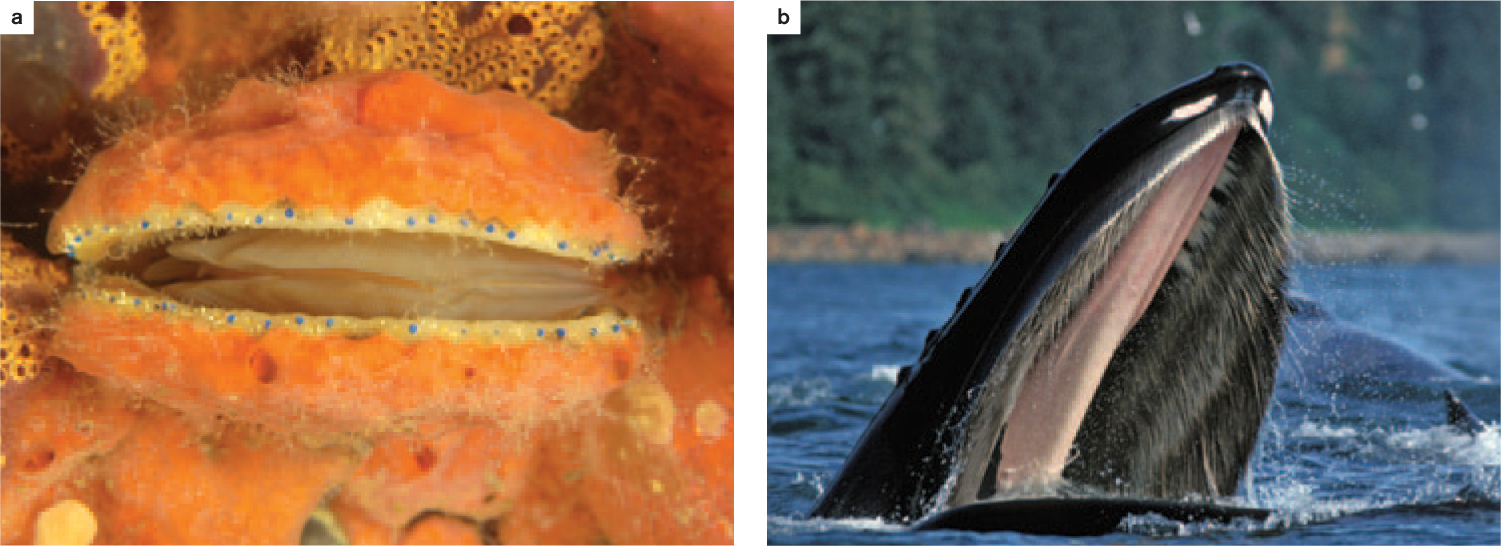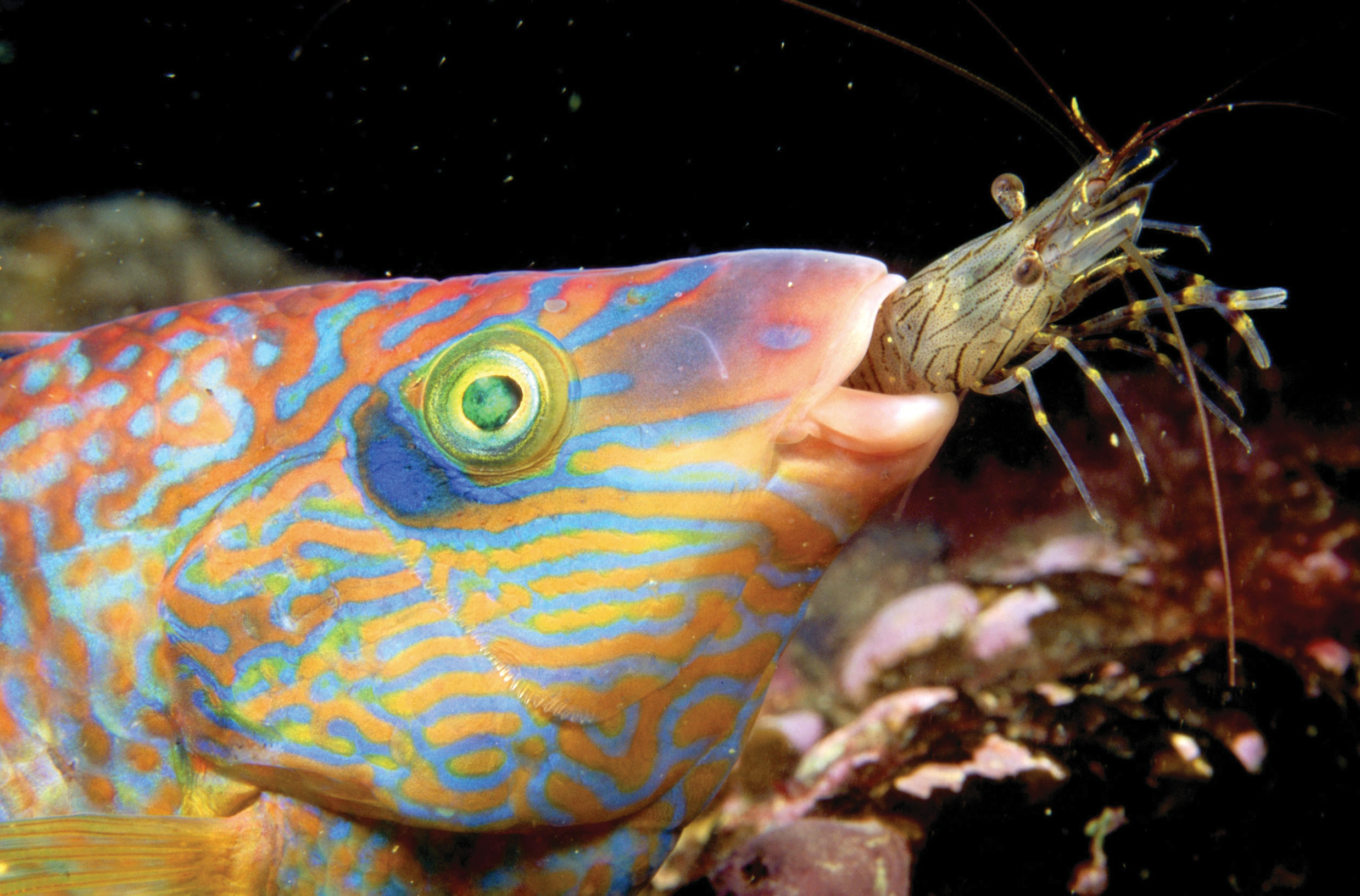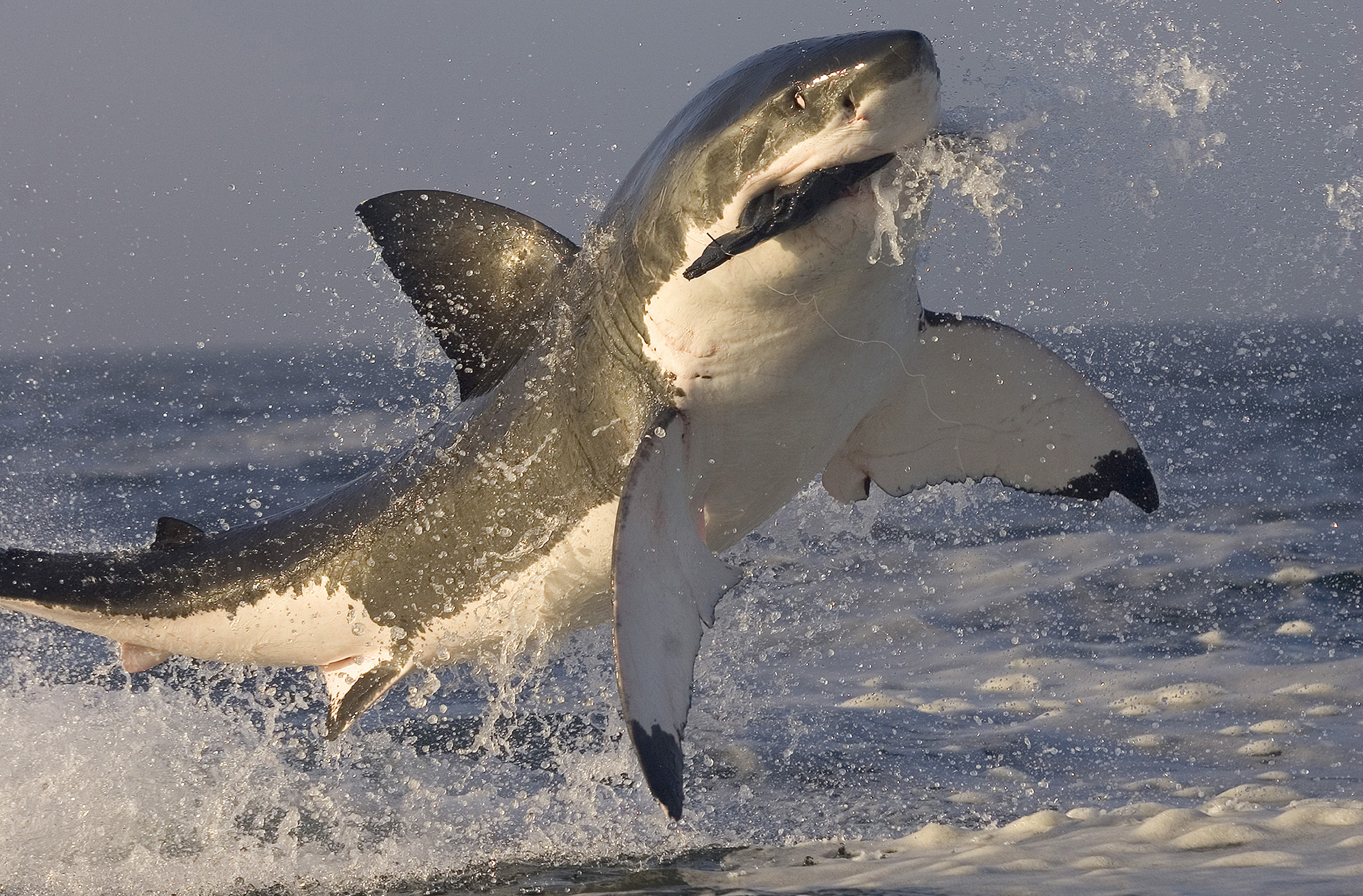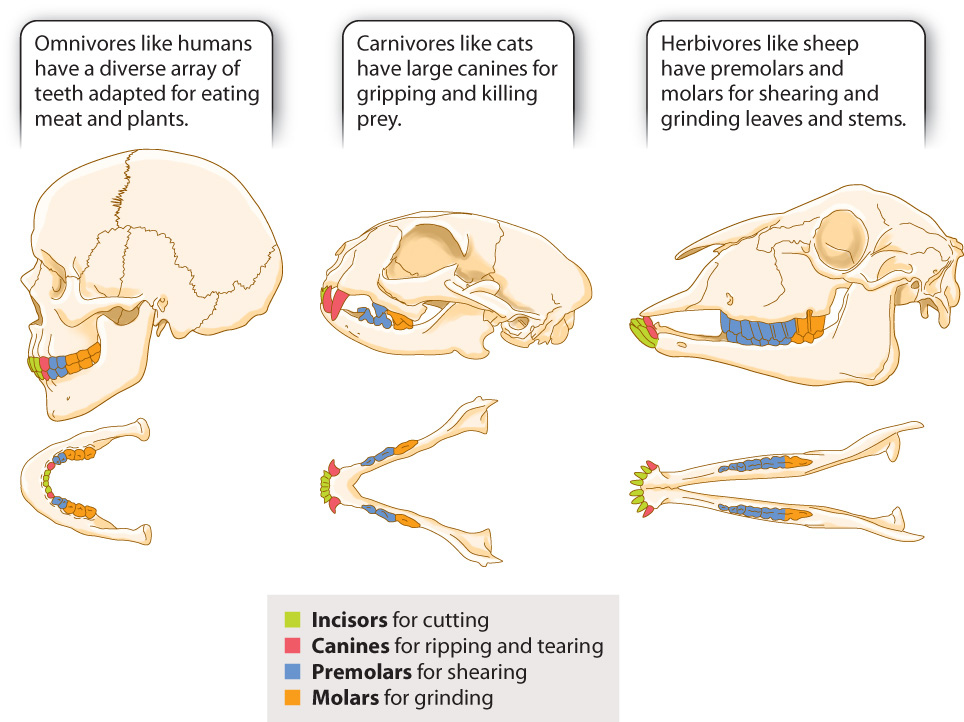40.3 ADAPTATIONS FOR FEEDING
Animals have evolved a variety of adaptations to enhance their ability to acquire energy from the environment. Animals eat other organisms, whether they are other animals, plants, or fungi. Herbivores are adapted to eat plants; carnivores are adapted to eat animals; and omnivores are adapted to eat both. To acquire energy effectively from the food that they eat, animals have evolved a diversity of ways to capture food and mechanisms for breaking down that food before its digestion in the gut.
40.3.1 Suspension filter feeding is common in many aquatic animals.
The most common form of food capture by animals is suspension filter feeding, in which water with food suspended in it is passed through a sievelike structure (Fig. 40.8). Suspension filter feeding is possible only in aquatic environments, and its ubiquity there speaks to the great diversity of animals found in oceans and freshwater bodies. This form of feeding evolved multiple times independently on many different branches of the tree of life, and so represents a form of convergent evolution (Chapter 23).

Many worms and bivalve mollusks, such as scallops, clams, and oysters, pump water over their gills to trap food particles suspended in the water (Fig. 40.8a). Cells of the gills produce mucus that acts as an adhesive to trap food particles, and the cells’ beating cilia sweep food trapped in the mucus to the mouth and gut.
Other aquatic organisms move water with food particles suspended in it through filters in their oral cavity and then convey the food into the gut. Large baleen whales have long comblike blades of baleen (which is made of keratin, the same material that makes up hair) in their mouth to capture small shrimp called krill that are plentiful in ocean waters (Fig. 40.8b).
40.3.2 Large aquatic animals apprehend prey by suction feeding and active swimming.

Instead of relying on suspension filter feeding, many large aquatic animals capture their prey in other ways. Many fish feed by suction. A rapid expansion of the fish’s mouth cavity draws water and the desired prey into the mouth (Fig. 40.9). After the fish closes its mouth, the water is pumped out of the mouth cavity past the gills. The prey is trapped inside the mouth, moves into the pharynx (part of the throat), and is broken up by specialized pharyngeal jaws (a second set of jaws in the throat) before being swallowed. Suction feeding is the most generalized form of prey capture among fish, as it allows them to be “sit-and-wait” predators, hiding within a coral reef or under a rock before rapidly striking to capture prey moving in front of them. Suction feeding is effectively used by a wide variety of fish, as well as by aquatic salamanders, and has contributed to their evolutionary diversification and success.
Many insects that bite to obtain a blood meal also rely on suction to draw the blood of their prey into their digestive system. Young mammals also feed by suckling milk from their mother’s breast, using their tongue and also generating suction as fish do.
As top predators in marine and freshwater environments, larger fish and marine mammals like sharks, whales, and dolphins actively swim to capture their prey (Fig. 40.10). Their larger size and speed enables them to catch smaller or similar-sized prey. As discussed below, the evolution of jaws and teeth considerably enhanced the ability of these and other vertebrate animals to capture greater amounts of food, allowing them to lead a more active and energetically demanding lifestyle.

40.3.3 Jaws and teeth provide specialized food capture and mechanical breakdown of food.

Jaws and teeth were an important evolutionary innovation for active predators. Some of the first vertebrates, the jawed fishes, became dominant in their aquatic environment through the ability to swim and bite forcefully to obtain their food. Fig. 40.11 shows a phylogenetic tree of vertebrates indicating the appearance of jaws. Jawed fish evolved from jawless ancestors, and jaws can be found in present-day fish, amphibians, reptiles, and mammals. As you can see from the number of jawed groups, jaws are key to the evolutionary success of vertebrates. They are thought to have evolved from cartilage that supported the gills, providing a spectacular example of an organ adapted for one function (gill support) changing over time to become adapted for an entirely different function (predation).
Among vertebrates, mammals evolved a specialized jaw joint, the temporomandibular joint, as well as a great diversity of specialized forms of teeth. The temporomandibular joint allowed the teeth of the lower and upper jaws to fit together precisely. This anatomy facilitated the specialization of teeth with cutting and crushing surfaces, enabling mammals to break down a variety of foods mechanically before swallowing. Fig. 40.12 illustrates the arrangement of specialized teeth in mammals with different diets. Teeth in the front of the mouth, called incisors, are specialized for biting. Others, such as the canines of dogs, cats, and other carnivores, are specialized for piercing the body of their prey. Saber-toothed cats, which lived as recently as 10,000 years ago, represent some of the most remarkable examples of animals with long canines (up to 16 inches or 40 cm!) specialized for killing large prey. Molars and premolars are teeth in the back of the mouth that are specialized for crushing and shredding tougher foods, such as meat and fibrous plant material.

Herbivorous animals, such as cattle, sheep, and horses, have specialized molars and premolars with prominent surface ridges. These teeth enable them to shred the tough plant material that they eat before it is swallowed and digested. Mammalian herbivores use their front incisors and canines to bite grasses and leaves, and then move the food to the rear of the mouth, where it is ground and crushed between their ridged premolars and molars.